-
 bitcoin
bitcoin $122288.232522 USD
0.16% -
 ethereum
ethereum $4480.662914 USD
-0.22% -
 xrp
xrp $2.962747 USD
-2.32% -
 tether
tether $1.000120 USD
-0.05% -
 bnb
bnb $1145.654223 USD
-2.07% -
 solana
solana $227.105217 USD
-1.67% -
 usd-coin
usd-coin $0.999548 USD
-0.02% -
 dogecoin
dogecoin $0.250875 USD
-2.04% -
 tron
tron $0.340654 USD
-0.49% -
 cardano
cardano $0.837968 USD
-2.52% -
 hyperliquid
hyperliquid $48.960449 USD
0.06% -
 chainlink
chainlink $22.049280 USD
-1.33% -
 ethena-usde
ethena-usde $1.000404 USD
0.02% -
 sui
sui $3.586212 USD
0.20% -
 avalanche
avalanche $29.894916 USD
-4.18%
Why is my crypto not appearing in Trust Wallet after a transfer?
If your crypto isn’t showing in Trust Wallet, check the network, verify the transaction on a blockchain explorer, and ensure the correct token contract is added manually if needed.
Oct 01, 2025 at 04:36 am
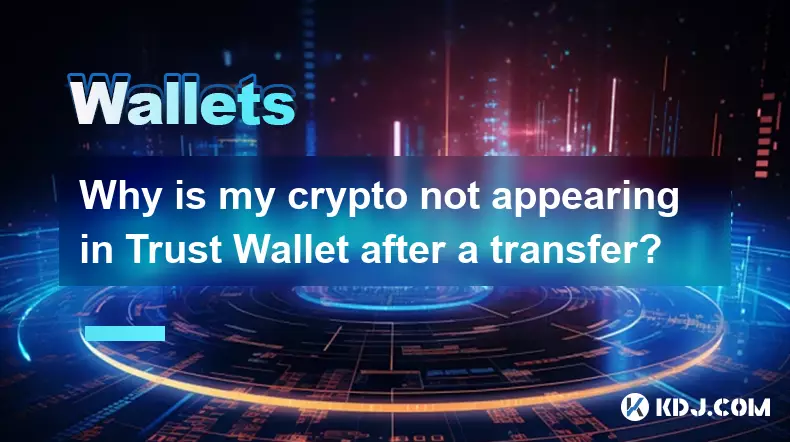
Common Reasons Your Crypto Doesn’t Appear in Trust Wallet
1. The transaction is still pending on the blockchain. Blockchain confirmations can take time, especially during periods of high network congestion. If the sender initiated the transfer recently, it may not have been fully processed yet.
2. You might be checking the wrong network. Many cryptocurrencies exist on multiple blockchains. For example, USDT can be sent via Ethereum, Binance Smart Chain, or Tron. If your Trust Wallet isn’t set to display tokens from the correct network, the balance won’t show up.
Always verify which blockchain was used for the transfer and ensure that network is enabled in your wallet settings.3. The token isn’t automatically detected by Trust Wallet. While major tokens are usually visible immediately, smaller or newly launched tokens may not appear unless manually added using their contract address.
4. An incorrect wallet address was used. If funds were sent to a similar-looking but invalid address, they may be lost or unreachable. Always double-check addresses before confirming any transaction.
5. Transaction failure due to insufficient gas fees. On networks like Ethereum, if the sender didn’t include enough gas, the transaction could fail without returning the tokens immediately, making it seem as though they disappeared.
How to Verify and Resolve Missing Crypto Transfers
1. Use a blockchain explorer such as Etherscan, BscScan, or Solscan depending on the network. Enter the transaction ID (TXID) provided by the sender to confirm whether the transaction was successful and reached your wallet address.
2. In Trust Wallet, go to the “Settings” menu and select “Wallet,” then choose the relevant account. Tap the three-dot menu next to the main currency (like BNB or ETH) and make sure the correct network is activated for the token you're expecting.
3. If the token still doesn’t appear, manually add it. Navigate to the '+' icon in Trust Wallet, select “Token,” then “Add Custom Token.” Input the correct contract address, token symbol, and decimals. This information must match exactly what’s listed on a reliable blockchain explorer.
Using an incorrect contract address can result in permanent loss of access to your funds—always cross-reference with official sources.4. Confirm with the sender that they used the right network and address. A mismatch at the sending end is one of the most common causes of missing deposits.
5. Wait for additional confirmations if the transaction is still pending. Some wallets require several confirmations before displaying incoming assets, particularly for larger transfers.
Preventive Measures for Future Transactions
1. Before receiving any crypto, communicate clearly with the sender about which network to use. Share not only your wallet address but also the required blockchain (e.g., “Send USDT via BEP-20 only”).
2. Save frequently used tokens in your wallet even if they currently hold zero balance. Once saved, Trust Wallet will monitor those contracts and display balances instantly when funds arrive.
3. Enable all relevant networks in Trust Wallet settings. While this doesn’t activate unnecessary features, it ensures visibility across chains where you may receive assets.
Never share your private key or recovery phrase with anyone, even when troubleshooting missing funds.4. Regularly update the Trust Wallet app to benefit from improved token detection, security patches, and expanded network support.
5. Store transaction IDs (TXIDs) for every transfer. These serve as proof of payment and simplify tracking through explorers if issues arise later.
Frequently Asked Questions
Can I recover crypto sent to the wrong network?In some cases, recovery is possible if both networks are supported within Trust Wallet and the recipient address format matches. However, most cross-chain transfers to incompatible networks result in permanent loss unless the service provider offers bridging or retrieval options.
Why does my transaction show zero value on the explorer?This typically means the transaction failed or was a 'zero-value' transfer used for smart contract interactions. Check the transaction status—reverted or failed transactions consume gas but do not move funds.
Will Trust Wallet automatically detect all ERC-20 tokens?No. While popular ERC-20 tokens are auto-detected, lesser-known ones require manual addition using the correct contract address. Failure to add them manually results in invisible balances despite successful transfers.
What should I do if the TXID shows success but Trust Wallet doesn’t reflect the balance?Force close and reopen Trust Wallet, check your internet connection, and refresh the asset list. If the issue persists, manually add the token using its verified contract details.
Disclaimer:info@kdj.com
The information provided is not trading advice. kdj.com does not assume any responsibility for any investments made based on the information provided in this article. Cryptocurrencies are highly volatile and it is highly recommended that you invest with caution after thorough research!
If you believe that the content used on this website infringes your copyright, please contact us immediately (info@kdj.com) and we will delete it promptly.
- BlockDAG, DOGE, HYPE Sponsorship: Crypto Trends Shaping 2025
- 2025-10-01 00:25:13
- Deutsche Börse and Circle: A StableCoin Adoption Powerhouse in Europe
- 2025-10-01 00:25:13
- BlockDAG's Presale Buzz: Is It the Crypto to Watch in October 2025?
- 2025-10-01 00:30:13
- Bitcoin, Crypto, and IQ: When Genius Meets Digital Gold?
- 2025-10-01 00:30:13
- Stablecoins, American Innovation, and Wallet Tokens: The Next Frontier
- 2025-10-01 00:35:12
- NBU, Coins, and Crypto in Ukraine: A New Yorker's Take
- 2025-10-01 00:45:14
Related knowledge
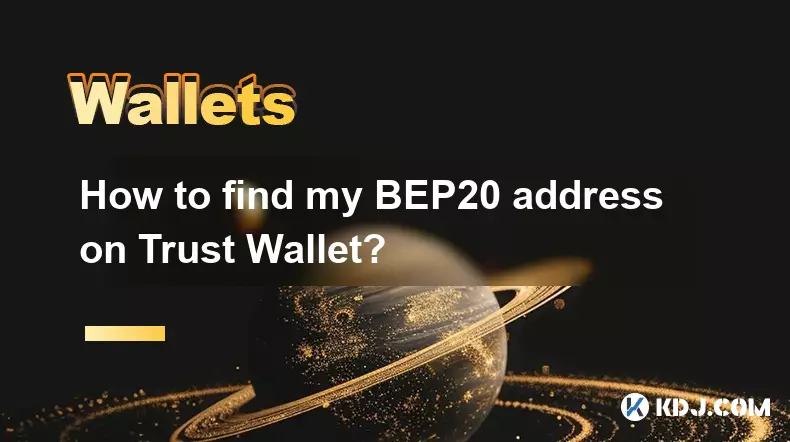
How to find my BEP20 address on Trust Wallet?
Oct 04,2025 at 06:19pm
Understanding BEP20 and Trust Wallet Compatibility1. Trust Wallet is a widely used cryptocurrency wallet that supports multiple blockchain networks, i...
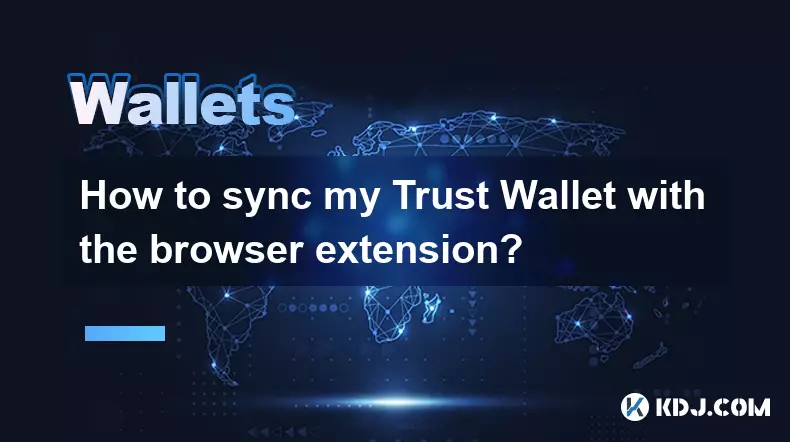
How to sync my Trust Wallet with the browser extension?
Oct 03,2025 at 06:19pm
Understanding Trust Wallet and Browser Extension IntegrationTrust Wallet is a popular non-custodial cryptocurrency wallet that supports a wide range o...
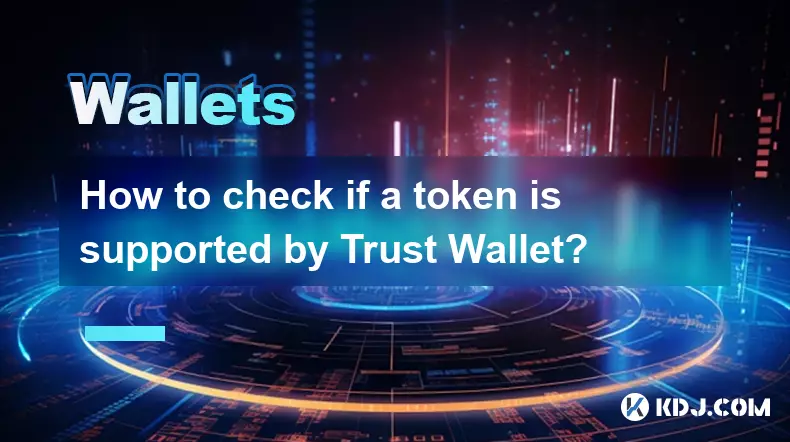
How to check if a token is supported by Trust Wallet?
Oct 04,2025 at 05:18am
Understanding Token Compatibility with Trust Wallet1. Trust Wallet supports a wide range of blockchain networks, including Ethereum, Binance Smart Cha...

How to get the Trust Wallet browser extension?
Oct 01,2025 at 12:37am
How to Access the Trust Wallet Browser Extension1. Visit the official Trust Wallet website through a secure internet connection. Navigate to the downl...

How to interact with a DApp using Trust Wallet?
Oct 02,2025 at 10:00pm
Connecting Trust Wallet to a DApp1. Open the Trust Wallet app on your mobile device and ensure your wallet is unlocked with access to your assets. Nav...
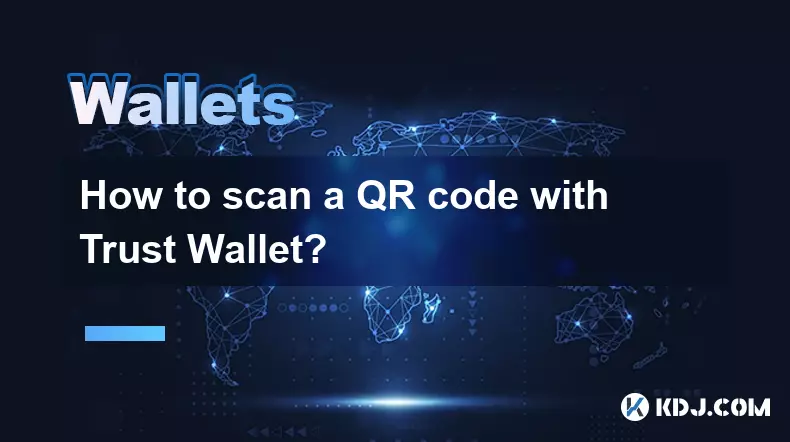
How to scan a QR code with Trust Wallet?
Oct 02,2025 at 03:37pm
Understanding QR Codes in Trust Wallet1. QR codes are widely used in cryptocurrency applications to simplify transaction processes. Trust Wallet lever...

How to find my BEP20 address on Trust Wallet?
Oct 04,2025 at 06:19pm
Understanding BEP20 and Trust Wallet Compatibility1. Trust Wallet is a widely used cryptocurrency wallet that supports multiple blockchain networks, i...

How to sync my Trust Wallet with the browser extension?
Oct 03,2025 at 06:19pm
Understanding Trust Wallet and Browser Extension IntegrationTrust Wallet is a popular non-custodial cryptocurrency wallet that supports a wide range o...

How to check if a token is supported by Trust Wallet?
Oct 04,2025 at 05:18am
Understanding Token Compatibility with Trust Wallet1. Trust Wallet supports a wide range of blockchain networks, including Ethereum, Binance Smart Cha...

How to get the Trust Wallet browser extension?
Oct 01,2025 at 12:37am
How to Access the Trust Wallet Browser Extension1. Visit the official Trust Wallet website through a secure internet connection. Navigate to the downl...

How to interact with a DApp using Trust Wallet?
Oct 02,2025 at 10:00pm
Connecting Trust Wallet to a DApp1. Open the Trust Wallet app on your mobile device and ensure your wallet is unlocked with access to your assets. Nav...

How to scan a QR code with Trust Wallet?
Oct 02,2025 at 03:37pm
Understanding QR Codes in Trust Wallet1. QR codes are widely used in cryptocurrency applications to simplify transaction processes. Trust Wallet lever...
See all articles










































































